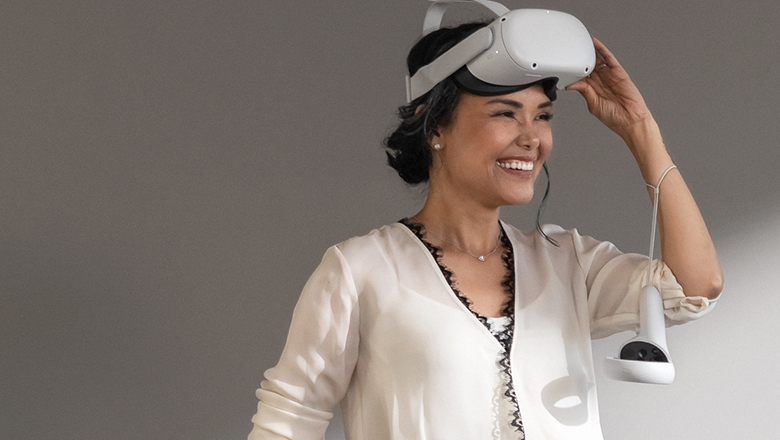Oculus might have a fix to end VR motion sickness for good
Virtual reality accessibility has gone from strength to strength in recent years, with Oculus VR leading the pack thanks to its all-in-one, relatively-affordable Oculus Quest and Oculus Quest 2 headsets. But one barrier remains for some would-be virtual reality gamers – motion sickness.
Because what’s happening in a gamer’s field of view in virtual reality doesn’t always match up with the way their body moves, queasy feelings can interrupt and spoil the enjoyment of virtual reality apps and experiences.
But Oculus may have a solution to fix the problem once and for all. In a Twitter Spaces conversation with Vice President of Facebook Reality Labs Andrew Bosworth (and transcribed by Upload VR), John Carmack, Consulting Oculus Chief Technology Officer, might have cracked it.
- Check out our Oculus Quest 2 review
- Everything we know about Oculus Quest 3
- The best Oculus Quest 2 games in 2021
Getting rid of VR motion sickness: how it might work
Carmack first discussed some existing solutions they encourage developers to employ at Oculus:
“Some of the mitigations that we tell people about about, well, like a cockpit around the edges can help because that’s the furthest out to your periphery — that largest motion — if you cover that up, people do the shrinking vignettes when you’re moving.”

But Carmack thinks that, if certain calculations can be made for in-game objects, a system-wide implementation could be introduced that could defend against motion sickness effects.
“If we do a little bit of changes to the engines and pass some more depth information, which we want to do for positional time warp things, anyways, it’s possible for us to do a systems-level approach that’s actually aware of the depth next to it.
“So in a game like POPULATION: ONE, they offer multiple comfort levels that determine how much you pull in at the sides and it’s helpful for people. But it’s wasteful in some sense, because if you’re outside, you’ve got the sky at effectively infinity and that causes no impact to your comfort at all when it’s moving there. But the vignette winds up covering it anyways. What we need to do is look at the depth of things relative to your view, how much it’s moving incorrectly relative to the inertial stuff and only fade out things proportional to that relationship.
“So I think that if you’re ducking for cover right behind a wall, that’s the stuff that can really make you sick if you translate next to it, the sky doesn’t have any impact on it whatsoever. So I think that we could do something system-level that could then be uniform across games, which would be great because right now each game has its own mitigation method and it would be good for users if they just realize that, okay, this is the way VR worlds behave when you’re close to something and you slide with the controller, you can expect that to kind of vignette out on the side.”
A VR game changer
It’s an exciting idea for anyone that’s been forced to take a break from a full-motion VR experience, and based on the sort of reasoning that seems so obvious when presented to you that it’s hard to believe it’s not been figured out already. What’s best is that Carmack’s solution would work to minimise the intrusion of vignette effects on the full image – only being introduced when and where they’re necessary. And, with a system-level implementation, it would take the headache away from developers having to figure out how best to mitigate sickness in their games, while also giving a consistent motion language for gamers to get used to across all games.
However, this won’t be something we’ll be seeing anytime soon, it seems
“That’s the type of thing that heck it’ll probably take us two years to sort of work something out and push it through developers and get buy in and get people to agree to it,” said Carmack.
“But I think that’s a long-term direction that’s got some real potential.”
Something to think about for the Oculus Quest Pro, or Oculus Quest 3 then, perhaps?
from TechRadar - All the latest technology news https://ift.tt/3vc8Yxb
No comments